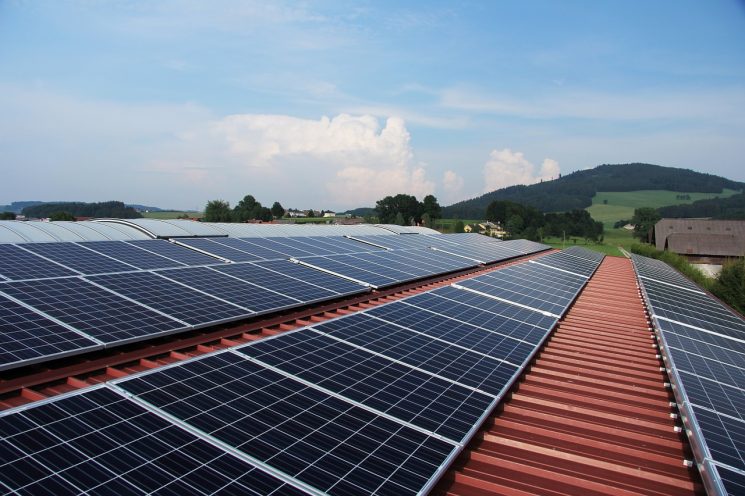Solar energy is becoming crucial for commercial buildings due to its cost-saving and environmental benefits. By installing solar panels, businesses can reduce energy bills, lower carbon footprints, and achieve energy independence. Soly products offer high efficiency and reliability, making them a top choice for commercial solar solutions. Investing in solar panels is not just a smart financial move but also a step towards a sustainable future.
Assessing the Feasibility
Start by evaluating your building’s roof structure and space availability. Ensure your roof is strong enough to support the weight of solar panels. Flat roofs are often ideal, but pitched roofs can also work with the right adjustments. Measure the available space to determine how many panels can fit. Next, conduct a solar energy assessment. Tools like Google’s Project Sunroof can estimate how much sunlight your building receives. For a more detailed analysis, hire a professional to conduct an energy assessment, which will help in planning your solar panel system. Consider the geographical location and solar potential of your building. Solar panels perform best in sunny areas, so it’s crucial to examine your local climate and weather patterns. The angle and direction of your roof are also important factors for maximizing sunlight exposure.
Understanding the Costs and Financial Incentives
Break down the costs involved in installing solar panels, including the price of the panels themselves, installation fees, and ongoing maintenance. Understanding these costs helps you plan your budget effectively. Explore federal and state incentives, tax credits, and rebates that can significantly reduce the overall cost of installing solar panels. These financial incentives can make solar energy more affordable and attractive. Consider various financing options such as loans, leases, and power purchase agreements (PPAs) to spread out the costs and make the investment more manageable.
Selecting the Right Solar Panel System
Choose from different types of solar panels—monocrystalline, polycrystalline, or thin-film. Each type has its advantages and costs. Monocrystalline panels are efficient but expensive, while thin-film panels are cheaper but less efficient. Match the capacity and size of your solar panel system to your energy needs. Calculate your building’s energy consumption to determine how many panels you require. Compare the efficiency, durability, and warranties of different solar panels. Look for panels with good warranties to protect your investment over time.
Finding a Reputable Solar Provider
Research and vet solar installation companies by checking their certifications and experience. Local companies often have better knowledge of local building codes and regulations. Read online reviews and ask for testimonials from other businesses to gauge the quality and reliability of the solar provider. Obtain quotes from multiple providers and compare them. Examine what each quote includes, such as equipment, labor, and permits, to choose the best value for your needs.
Navigating the Installation Process
- Initial Consultation: Start with an initial consultation with a solar provider. This step involves discussing your energy needs, budget, and goals. The provider will explain the potential benefits and challenges, giving you a comprehensive understanding of the project scope.
- Site Survey: The next step is a detailed site survey. Professionals will visit your building to assess the roof structure, space availability, and potential shading issues. They will also evaluate the building’s electrical system to determine compatibility with the new solar panel system.
- Design: Based on the site survey, the solar provider will create a customized design plan. This plan includes the layout of the solar panels, the positioning for optimal sunlight exposure, and the integration with your existing electrical system. A well-designed system maximizes energy production and efficiency.
- Permitting: Before installation can begin, it’s essential to obtain the necessary permits and approvals from local authorities. This step ensures compliance with local building codes and regulations, which is crucial for safety and avoiding legal issues. The solar provider typically handles this process, but it’s good to be aware of what’s required.
- Installation: Once permits are secured, the installation process begins. This involves mounting the solar panels on the roof, installing the inverters, and connecting the system to your building’s electrical network. Professional installers will ensure all components are securely and correctly installed.
- Grid Connection: After installation, the solar system must be connected to the power grid. This step involves setting up net metering, which allows you to sell excess energy back to the grid. It’s also an excellent time to consider energy storage options like batteries to store surplus energy for later use.
- Final Inspection and Activation: Finally, a thorough inspection ensures the system is installed correctly and safely. Once approved, the system is activated, and you can start generating solar energy.
Maintenance and Monitoring
Regular maintenance tasks, such as keeping the panels clean and checking for debris, are essential. Regular inspections help identify and fix issues early, ensuring your system works efficiently. Use monitoring tools to track energy production and system performance. This helps ensure your solar panels are functioning correctly and maximizing sunlight. Learn to troubleshoot common issues like reduced energy output or damaged panels. Contact professional maintenance services if problems arise.
Evaluating Long-Term Benefits and ROI
Calculate the return on investment (ROI) by considering factors like initial costs, energy savings, and incentives. Over time, solar panels can save significantly on energy bills and reduce your building’s carbon footprint, contributing to environmental sustainability.
Parting Words
Installing solar panels on a commercial building involves several steps, from assessing feasibility and understanding costs to selecting the right system and ensuring proper installation. By integrating solar panels with existing energy systems and maintaining them regularly, businesses can enjoy long-term benefits, including significant cost savings and a reduced carbon footprint. With the right planning and a reputable solar provider, your commercial building can harness the power of solar energy efficiently. Don’t wait—take the first step towards sustainable energy and contact a solar provider today.





